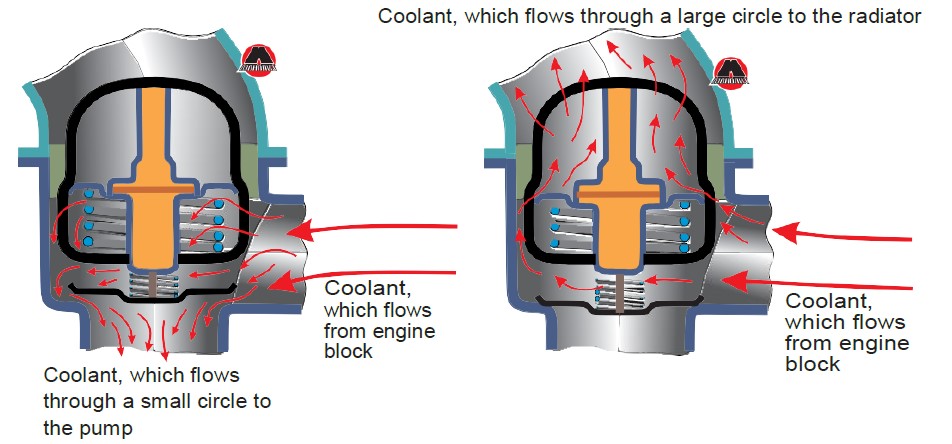4.8.7 Thermostat
Thermostat is a valve, which is installed in the body. It opens when the coolant heats up to normal operating temperature. An example of the design and operation of the thermostat is shown in Figure 4.37. The engine cooling system is designed so that it has two circles of circulation - small and large. When the thermostat valve is closed, the coolant is circulated by the water pump only within the cylinder head and engine block, thus it warms up quickly (small circle). As the coolant, in particular, and the engine as a whole warm up, the thermostat valve starts opening, letting the coolant circulate through the radiator - a large circle.
Note
Excessive overheating of the coolant reduces engine power and efficiency. In case if the coolant, and therefore the engine, does not warm up, then the condensation of the fuel increases. It causes the lubricant to be flushed from the cylinder walls and thinning it in the crankcase, as well as increasing heat losses. This leads to a decrease in engine power and an increase in fuel consumption.
 Figure 4.37 Function of thermostat.
Figure 4.37 Function of thermostat.



















2 MB